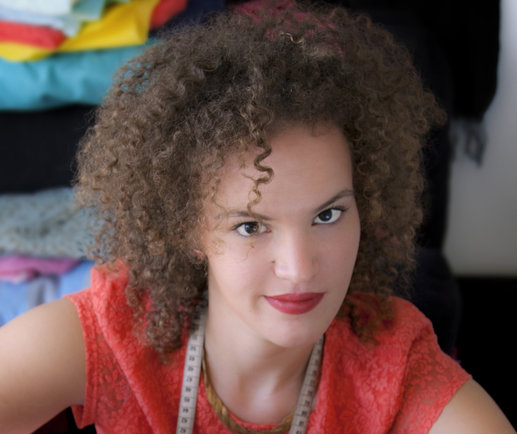This article originates from Women In 3D Printing and is part of our effort to support the use of 3D printing technology by women. The article is re-published with permission.
Madelynn Martiniere is in the business of community engineering for technology companies. Over the past 5 years she has worked alongside both startups and large corporations alike to bring about the new hardware revolution. Through strategic communications, partnerships, and programming, her methodologies bridge the gap between the maker movement and scalable enterprises. She is currently the Director of Community for Fictiv.
Madelynn, could you let us know about your background and what brought you into the hardware space?
I’m a storyteller with a fascination for technology; my childhood dream was always to be a science fiction writer. After a fortuitous introduction to engineering in college, I realized that everything I had been writing about predicting far into the future was already happening. Since then, I’ve been dedicated to the democratization of education, and building communities that provide access to the tools, knowledge and connections to build sustainable, scalable technology. I was fortunate enough to be involved in the early growth of the maker movement here in the U.S., built hackerspaces, and later ran a consultancy working with makers, startups, and big technology companies alike on how to build communities around innovation.
What was your very first experience with being a maker? and using 3D printing?
My first introduction to the maker movement was through a hackerspace in Chicago, Pumping Station: One. I found the concept, with access to tools, knowledge, and community infectious. I think the first thing I 3D printed oddly enough were several parts to restore a vintage sewing machine to working order. Took a few tries on a very fussy first generation MakerBot, but that sewing machine worked.
What does “being a Maker” mean for you?
Being a maker to me is about self-efficacy and being inspired by the fundamental human ability to create. It’s about being voracious for new knowledge. The art and playfulness of failure. And it’s fundamentally about the power of community to think bigger and build better.
What is it about hardware that fascinates you?
Hardware was immediately interesting to me because it appealed to my fascination with both electronic and mechanical engineering. The idea of making tangible things that can create lasting impact resonated with me. I was, and continue to be fascinated by how hardware can prove so simple and so complex, all at once.
You are a figure of the Makers movement, helping getting the movement more recognized and professionalized. Is there anything you would like to share to those wondering about the Maker movement?
As the term “maker” gets increasingly popularized, it’s important to remember that the maker movement is not new, with roots in homebrew computer clubs and art collectives, and arguable correlations to periods of economic distress. We’re at an important inflection point in the democratization of both the information and tools needed to create, which has resulted in an increased rate of technological innovation. Going forward that’s where we’re going to see the greater potential of the maker movement. Increasingly, the line between maker and entrepreneur is blurring all across the world. This increase in access on a global scale is making it easier to turn ideas into products, and products into businesses. Call me an optimist, but this could have tremendous positive impact to global economies, and help us better solve for the grand challenges.
The Bay Area is mostly known for the Silicon valley and its software startups and giants groups. What does your experience tell about the makerspaces & movement in the Bay Area? / Is there still an interesting makers landscape in the Bay Area?
The maker movement has always had strong ties in Silicon Valley; one of the first hackerspaces in the U.S. is Noisebridge, here in San Francisco. The Bay Area also hosts an increasing number of hybrid models that also cater to maker education from TechShop, which offers access to professional tools, BioCurious for science endeavors, and The Crucible which focuses on industrial arts. There are few places in the world that have such a high concentration of knowledge, creativity, and resources, and I continue to see a significant increase in successful businesses coming out of the maker community here, which I’m excited to see develop.
How do you describe the hardware space / 3d printing industry relationship today?
Entrepreneurship encourages failure and iteration, and in hardware, iteration is a sophisticated challenge at best, and oftentimes an expensive failure at worst. The processes surrounding building hardware turning digital into physical, manufacturing at scale, and all the associated logistics has been a legacy industry that is going to change pretty radically in the next decade. My hope is that we’re going to see an increase in transparency around how hardware is built, as well as new business models that challenge our understanding of how we build, consume, and interact with hardware products. As we continue to democratize the tools and the information, it’s going to be increasingly easier to build better hardware. In 3D printing specifically, I’m excited for the developments that are already happening in more sophisticated printing processes, new materials, and growing understanding of the breadth of potential the technology can have.
How can 3D print actors be more present and helpful to the hardware and maker spaces?
Access to education and tools. Already we’re using 3D printing to print organs, houses, and automobiles, but the technology is still widely inaccessible to many communities. Share your knowledge and resources, and make education a core component of your business so that you can inspire others to see new and novel applications.
Do you notice more women involved with hardware projects?
We have some incredible female icons in all aspects the hardware industry, and the number is definitely increasing, but there is still a lot of room for improvement. I’m thankful to work with an incredibly diverse team, but it is unfortunately still very common for me to go to hardware events and be one of the only women, and I’ve heard too many horror stories of microaggression and toxic work environments to count.
In your opinion, how could we bring more women to be involved with hardware?
I think first and foremost we need to start by acknowledging that there is a problem. Silicon Valley has a history of problems with diversity, and the U.S. in particular has a systematically flawed education system that results in a lack of women empowered to go into STEM related fields. Start with education. The groundswell around the maker movement has incentivized hardware education, and we need to make it a priority to provide girls with the knowledge and tools of of how to make physical things at an early age. Inspire them with the products that we build by showing them how they work. Hardware companies also need to commit to attracting, retaining, and supporting the female talent. This starts with building a culture of respect and inclusiveness, actively pursuing female talent, and sharing those activities and experiences broadly so they can permeate across the ecosystem.
If you are interested in learning more about Mad
elynn, leave a comment here and we can have you in touch with her!
And don’t forget to join the Women in 3D Printing group on LinkedIn and Facebook!
California-based Nora Toure is the woman behind “Women in 3D Printing”, a group dedicated to promoting and showcasing the use of 3D printing for women. She’s also a Sales Manager at 3D print -on-demand service Sculpteo.



